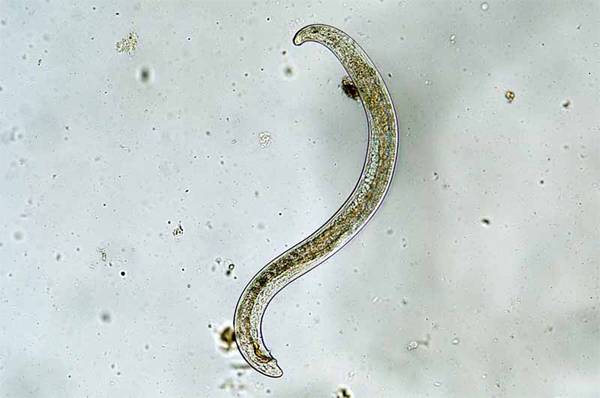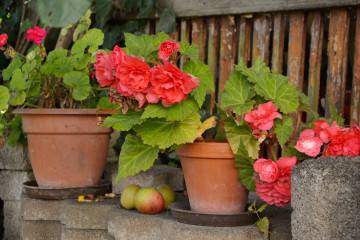Drummond phlox: growing from seed, when to plant
Content:
Phlox Drummond is an annual ornamental garden plant native to the southwestern United States, in particular the territory of the states of New Mexico and Texas. Drummond phlox propagates by seed. The pubescent branches of the plant are covered with whole lanceolate foliage. The leaves of some varieties have an ovoid blade, the narrow side of which is directed towards the petiole. Inflorescences with a five-part calyx are devoid of cover sheets. Florists love to decorate borders, flower beds and other types of flower beds with a tapestry of Drummond phlox.
Description of the flower
The flower cups are divided into five parts, the flowers are round in shape with five petals on the corolla. The corolla of phlox drummond can be colored red, pink, cream, purple.
Phlox Drummond varieties are divided into two numerous types - large-flowered (grow up to 45 cm in height, bloom in large flowers) and dwarf plants (10-20 cm in height).
Common varieties
Feueiball is a fairly tall annual (the tallest specimens reach 50 centimeters in height). It blooms in bright red, flower diameter 3 cm or less. In the middle of each flower there is a dark crimson eye.
Schneeball - neat bushes up to 35 cm high. Shoots are strong, densely covered with foliage. It blooms with white flowers with an orange tint. The diameter of the flower is 2.5 cm.
Gardeners consider the following crops to be no less popular types of phlox Drummond:
- with snow-white flowers Snowball and Beauty;
- with the bright red colors of Coccinea and Fireball;
- with pink Melange and Tutti-Frutti;
- with multi-colored flowers Chanel and Strawberry with cream;
- with multi-colored flowers that resemble stars, the Milky Way and Star Lace;
- with bluish lilac - Sailor and Blue frost.
Florists also plant specimens from varietal mixed groups:
- Perikot Mixed. Consists of dwarf phloxes 10 cm in height with small colorful flowers. It blooms for a long time and profusely;
- Beauty Mixed. This varietal mixture is characterized by bright flowers on 15-20 cm stems;
- Twinkle Mixed. Dense bushes 20 cm in height with multi-colored flowers resembling stars;
- Nana Compacta. Plants dotted with a kaleidoscope of colorful flowers. They grow up to 25 cm. Bloom profusely;
- Grandiflora (Grandiflora). Rather tall (35–45 cm) plants with large, up to 10 cm in diameter, inflorescences;
- Tetra Riesen. Dwarf phlox. They bloom in large flowers with a diameter of 4-5 cm. Flowers can be monochromatic and multi-colored.
Growing seedlings
Seeds for seedlings are germinated in plastic containers filled with soil. The ideal time for sowing is the third decade of March. The grooves previously made in the ground are filled with seeds, after which the containers are covered with plastic wrap. Crops are not watered, but moistened from a sprayer and aired daily.
The first shoots will appear in 1-2 weeks, provided that the room temperature does not drop below 22 ° C. After the emergence of seedlings, the polyethylene is removed and the cultivation of seedlings is continued at home on a light windowsill. Make sure the soil is moistened.
Seedlings are planted in open ground at the end of May, if warm weather is established by this time. Before transplanting phloxes to the beds, they are tempered: within two weeks, the pots with seedlings are taken out into the street, first for 2-3 hours, and over time, if weather conditions permit, for the whole day.
Recommendations for sowing seeds in open ground
Seeds do not need to be germinated indoors. You can immediately sow them in open ground. Many gardeners who have no time to tinker with flower seedlings do just that: after the arrival of warm May days, they drop the seeds of phlox drummond into the beds, after moistening the planting site. Experienced growers believe that the seeds should be laid out in the ground, leaving a distance of 10-15 cm between them. With a denser sowing, only the strongest seeds will germinate.
Autumn sowing rules and follow-up care
Many growers sow seeds in open ground before winter. Having chosen one of the sunny autumn days, the fruits of the capsule are collected from the withered stems of the best plants. The seeds are laid out in pre-prepared grooves in early November (in the southern regions in December), after the first frost froze the upper layers of the soil.
The future flower bed is sprinkled with dry earth and slightly trampled. First, caring for the sprouts of phlox Drummond consists in loosening the soil and feeding the plants. The first time the soil is loosened after all the seeds have hatched. Weak and underdeveloped shoots are removed.
Sprouted seedlings must be fertilized with nitrogen-containing fertilizing. For the first time, fertilizers are applied to the soil immediately after the appearance of the first shoots. The second time phloxes are fertilized 9-10 days after the first feeding. The next portion of fertilizer is applied during the bud formation period.
Reproduction of phlox
The easiest way to reproduce phlox is to divide the bush. The procedure is carried out in spring or autumn immediately after the end or before the arrival of frost. Having dug a bush, first free the rhizome from the ground, and then carefully divide the root system of the plant so that 5-6 offspring and at least 3 growth buds remain in the separated area. The separated bush is planted in a new place.
Reproduction of phlox by cuttings
The best time for grafting is mid-May and all of June. During this period, the cuttings take root very quickly.
Cutting consists in pruning young shoots 5 to 8 cm long with five or seven leaves. The lowest and highest leaves are removed, and the cuttings are planted immediately on a garden bed or in a box with well-loosened soil. There should be two knots on each handle.
Sprinkle the ground on top with a 2-3-centimeter layer of sand. The sand is necessary to prevent the cuttings from rotting and the formation of a dry crust on the surface of the earth. Boxes with cuttings are kept in a warm and humid poorly lit room. With the onset of spring, they can be transferred to the garden bed.
Seedling and seedless methods of growing Drummond phlox
When growing seedlings, the florist takes into account the growing season of the plants. The growing season of phlox (the time from sowing to the beginning of flowering) lasts 100–120 days, so it is necessary to sow their seeds for seedlings in March.
The seedless method involves sending seeds directly to open ground.
Reproduction of phlox by layering
The bushes are sprinkled high with fertilized soil and wait for the formation of roots on those parts of the stems that are covered. When the roots develop, they are cut off. Now they can be put in a new place.
Preparing phlox for wintering
Preparing phloxes for winter, cut off their aboveground part. Only 10-centimeter stumps are left. The earliest varieties of phlox are pruned in mid to late September, and the later ones in October.
After pruning, the plants are covered with dry grass, vegetable tops or spruce branches.
Preparing for winter must be preceded by the elimination of bacteria and insect pests. At the end of September, the soil is treated with fungicides such as foundazol and phytosporin-M.
Fungicide treatment is best done on a windless day (if it rains, it is better to postpone the procedure). Two days before the procedure, phloxes are watered abundantly.
About two weeks after the soil is treated with fungicides, the plants are fertilized, but not with nitrogen substances - the provocateurs of the growth of green parts of plants. The best type of autumn feeding is substances containing phosphorus and potassium: 1 tbsp. pour a spoonful of funds under each bush.
Diseases and disease vectors
The most dangerous viral disease affecting phlox is variegation. The flowers of a diseased plant change color as a result of the distortion of the formation of anthocyanin, a coloring pigment. The flower petals are covered with stripes along the radius, the color of which is one tone lighter than the natural one.
The infection deprives phlox of varietal traits and gradually brings the plant to complete degeneration.
Drummond phlox can also be threatened by:
- jaundice (flowers acquire a green tint) is a disease, provocateurs of which are mycoplasmas. Cicadas are carriers of jaundice. There are no chemical agents that can overcome the disease;
- powdery mildew. Overpowered by a plant growing in high humidity conditions. Treatment is reduced to treatment with topaz and speed. Treatment with drugs is carried out in June, once every 10 days.
Among the pests that threaten the health of phloxes, there is a filamentous worm nematode. Penetrating into the tissues of the plant, he feasts on its juices, and with the onset of cold weather moves to the rhizome. Infection with the parasite is manifested in the swelling of phlox roots and foliage curling. You can fight the insect with an insecticide.
In general, Drummond phloxes are unpretentious and easy to grow. They can be planted both as seedlings and seeds in open ground. The main thing is to follow the rules described above, and then they will bloom all summer.




















